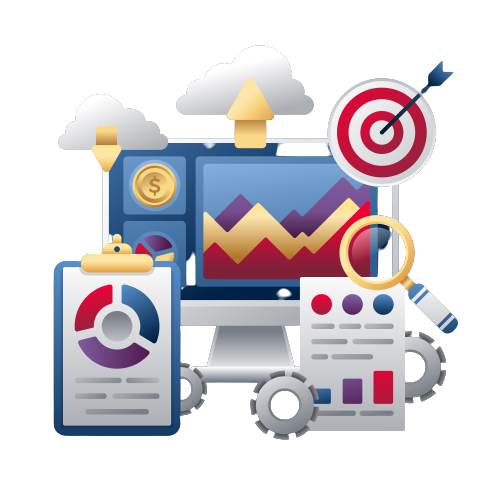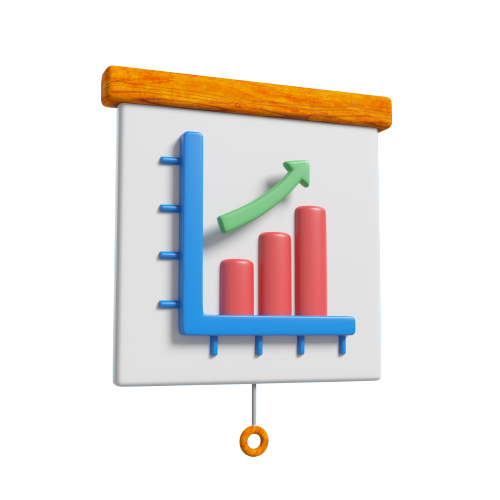
Today, we’re diving headfirst into the world of business growth and market expansion. You know, that thrilling phase when companies stretch their wings and try to conquer new territories. But hey, let’s face it – it’s not always a walk in the park. Breaking into a new market can be like trying to open a stubborn pickle jar – you need the right tools to crack it open.
Imagine having a tool that not only helps you connect with potential customers but also understands their preferences like a friend. This tool can analyze data, learn from it, and guide you on the best path to take. It’s like having a map that shows you the shortcuts to success. Here is the superhero of our story: SaaS Marketing Automation.
In this blog, we’ll explore how SaaS companies marketing automation is changing the game of market penetration. We’ll break down the complicated parts into simple bits, so you can see how it all works. From personalizing your messages to making decisions based on real numbers, this is the key that can open doors to new markets.
And it’s not just about numbers and data – it’s about understanding people and cultures. We’ll see how SaaS Marketing Automation helps businesses adapt to different regions, making sure your message isn’t lost in translation.
So, if you’re curious about how businesses are making their mark in new territories and if you want to know the magic behind those successful expansions, then keep reading. We’re about to dive into the world of SaaS Marketing Automation and discover how it’s becoming the ultimate key to breaking barriers and reaching new horizons.
So, buckle up for an exciting ride through the world of SaaS marketing automation and how it’s turning market penetration from a challenge into a thrilling adventure.
Understanding Market Penetration Challenges

Every business aspires to conquer new markets and extend one’s reach is a fundamental goal for growth and success. However, the journey toward market penetration is not without its challenges. Businesses encounter a myriad of obstacles when venturing into uncharted territories, aiming to captivate new audiences and establish a formidable presence. In this exploration, we dissect the intricate web of hurdles that companies face when endeavoring to expand their business and shed light on how SaaS marketing automation emerges as a transformative solution.
- The Maze of Unfamiliarity: Entering a new market means dealing with the unknown – from understanding the local culture and consumer behavior to navigating regulatory landscapes. This unfamiliarity often leads to missteps, hampering a seamless market entry.
- Competition and Established Players: In established markets, businesses must contend with fierce competition from existing players who have already captured significant market share. This competitive landscape can make it challenging for newcomers to secure their spots.
- Cultural and Language Barriers: Cultural nuances and language barriers can create communication gaps and hinder effective engagement with the target audience. Businesses must tailor their messaging to resonate with local sensibilities.
- Adaptation to Local Preferences: Consumer preferences can vary drastically from one market to another. Adapting products, services, and marketing strategies to align with these preferences is crucial for success.
- Resource Limitations: Expanding into new markets demands additional resources – both financial and human. Balancing these requirements while maintaining the core business operations can be a juggling act.
- Regulatory and Legal Complexities: Each market comes with its own set of regulations and legal requirements. Navigating these complexities demands meticulous research and strategic planning.
- Brand Recognition and Trust: Establishing brand credibility and trust in a new market can be an uphill battle. Consumers may be hesitant to switch from established local brands to a new entrant.
- Distribution and Supply Chain Challenges: Efficient distribution and supply chain networks are critical for reaching customers. New markets might have logistical challenges that businesses need to address.
SaaS Marketing Automation: A Beacon of Hope

In the face of these formidable challenges, SaaS marketing automation emerges as a beacon of hope for businesses striving to break through market entry barriers. Leveraging cutting-edge technology, automation provides a comprehensive toolkit to tackle these challenges strategically:
- Personalization and Localization: Automation tools enable businesses to personalize their marketing efforts based on local preferences and behaviors, fostering a stronger connection with the audience.
- Data-Driven Insights: Analytics offered by automation platforms provide valuable insights into market trends, helping companies make informed decisions and refine their strategies.
- Scalable Campaigns: Automation allows for the creation and execution of marketing campaigns on a scalable level, ensuring consistent and targeted outreach.
- Cross-Cultural Adaptation: Through automation, businesses can adapt their messaging and content to suit different cultures, bridging the gap between diverse audiences.
- Efficient Resource Allocation: Automation optimizes resource allocation, making it possible to manage multi-market operations without excessive strain on finances and workforce.
By understanding and addressing the complexities of entering new markets, businesses can pave the way for growth, expansion, and lasting success on a global scale using SaaS Marketing Automation software.
The Evolution of SaaS Marketing Automation

The journey of marketing automation tools from simple solutions to market-penetrating powerhouses is a testament to the technological advancements and changing consumer behaviors that have shaped the modern business world.
Early Beginnings and Basic Automation
The roots of marketing automation can be traced back to the early days of email marketing. Basic tools were introduced to help marketers automate repetitive tasks like sending emails to segmented lists. These early solutions laid the foundation for the concept of reaching the right audience at the right time without manual intervention. However, their capabilities were limited, focusing primarily on email campaigns and lacking the depth required for holistic market penetration strategies.
Expanding Horizons with Multi-Channel Automation
As technology advanced, marketing automation platforms began to incorporate multiple communication channels beyond emails. Social media, SMS, and even personalized website experiences were integrated into these systems, allowing businesses to engage with customers across various touchpoints. This expansion marked a significant step towards reaching wider audiences and establishing a stronger online presence, yet it still fell short of the dynamic demands of market penetration.
Data-Driven Insights and Customer Journey Mapping
One of the pivotal shifts in the evolution of SaaS marketing automation was the integration of data analytics and customer journey mapping. Modern automation tools harness the power of data to provide marketers with actionable insights into customer behaviors, preferences, and pain points. This transformation enabled businesses to create highly personalized and relevant campaigns, a critical element for overcoming barriers to market entry.
From Lead Nurturing to Full Lifecycle Management
As marketing automation matured, it evolved from merely nurturing leads to managing the entire customer lifecycle. Sophisticated automation platforms began incorporating lead scoring, segmentation, and advanced workflows that facilitated smoother transitions from marketing to sales teams. This comprehensive approach allowed businesses to tailor their engagement strategies at every stage of the customer journey, facilitating deeper connections and a more effective market entry strategy.
Market-Penetrating Powerhouses
Today’s SaaS marketing automation tools have evolved into market-penetrating powerhouses, armed with a plethora of features designed to address the intricacies of market entry. They offer a comprehensive suite of capabilities, including behavior tracking, lead nurturing, personalized content delivery, A/B testing, and seamless integration with other business systems. These tools empower businesses to craft sophisticated strategies that not only break through market barriers but also establish a strong foothold in new territories.
The evolution of SaaS marketing automation has been a journey of innovation and adaptation. As technology continues to advance and consumer behaviors evolve, SaaS marketing automation will continue to shape the future of business expansion, enabling companies to conquer new markets and unlock unprecedented growth opportunities.
How SaaS Marketing Automation Empowers Businesses To Create Tailored Strategies?
![]()
Nowadays, customers demand experiences that speak directly to their needs, preferences, and pain points. This shift in consumer behavior has given rise to the importance of personalization – the ability to tailor marketing strategies to individual customers. This is where SaaS marketing automation steps in, transforming the way businesses approach their audience engagement.
Understanding Personalization and Targeting
Personalization isn’t just about addressing customers by their first name in an email. It goes far beyond that, involving the delivery of content, products, and messages that align with a customer’s unique interests and behaviors. This creates a sense of connection and relevance, making the customer more likely to engage and convert. However, achieving such personalization manually is a daunting task as businesses deal with a myriad of data points for each customer.
The Role of SaaS Marketing Automation
SaaS marketing automation platforms act as the brains behind personalized marketing campaigns. They analyze customer data from various touchpoints, such as website visits, email interactions, social media behavior, and purchase history. By centralizing this data, the software can create comprehensive customer profiles, enabling businesses to understand their customers in-depth.
Creating Tailored Strategies
With the power of customer insights at their fingertips, businesses can craft highly targeted strategies that align with the unique preferences of specific market segments. For instance, if an online clothing retailer identifies a segment of customers who frequently purchase sportswear, they can automate personalized emails featuring the latest sportswear arrivals. This level of customization boosts engagement, as customers receive content that directly addresses their interests.
Automated Customer Journeys
SaaS marketing automation allows businesses to map out intricate customer journeys. From the moment a customer interacts with the brand to the point of conversion, every touchpoint can be automated to deliver relevant content. For instance, if a customer abandons their shopping cart, the automation software can trigger a series of follow-up emails offering discounts or recommendations based on their abandoned items.
Segmentation and Dynamic Content
Segmentation is at the core of personalization. SaaS marketing automation enables businesses to segment their audience based on various criteria, such as demographics, purchase history, and engagement level. These segments can then be targeted with dynamic content that changes based on the recipient’s profile. Dynamic content ensures that each customer sees content that’s most relevant to them, increasing the likelihood of engagement and conversion.
Efficiency and Consistency
Manual personalization requires significant time and effort. SaaS marketing automation not only saves time but also ensures consistency in delivering personalized experiences. Businesses can set up rules and triggers that automate the delivery of content, reducing the risk of human error.
Thus, SaaS marketing automation empowers businesses to do just that by harnessing the power of data to create tailored strategies that resonate with specific market segments. This not only boosts engagement but also lays the foundation for lasting customer relationships built on relevance and value.
How Automation Tools Help In Collecting and Analyzing Data to Make Informed Choices for Successful Market Entry?

Making informed decisions is crucial, especially when it comes to expanding into new markets. The process of entering a new market can be intricate, requiring a deep understanding of consumer behavior, preferences, and trends. This is where data-driven decision-making supported by automation tools comes into play as a game-changer.
The Power of Data in Fueling Informed Choices
Data has emerged as one of the most valuable assets in the modern business world. It provides insights that can shape strategies, reveal opportunities, and mitigate risks. When entering a new market, understanding the local customer base, competition, and cultural nuances is paramount. Data-driven decision-making involves gathering, processing, and analyzing relevant information to create a solid foundation for market entry plans.
Role of Automation Tools in Streamlining Data Collection and Analysis
SaaS marketing automation tools play a pivotal role in simplifying the data collection and analysis process. These tools can gather vast amounts of data from various sources, such as social media, customer interactions, and online behavior. This data is then organized, cleansed, and presented in an easily digestible format, enabling businesses to identify trends and patterns that can guide their market entry strategy.
1. Comprehensive Data Collection
Automation tools can collect data from multiple touchpoints, providing a holistic view of the market landscape. This includes demographic information, consumer preferences, buying behaviors, and even competitor analysis. By automating the data collection process, businesses can save time and resources while ensuring accuracy and consistency.
2. Real-time Insights
One of the key advantages of automation tools is their ability to provide real-time insights. This allows businesses to monitor market trends as they emerge and make timely adjustments to their strategies. For instance, if a particular product or service gains popularity unexpectedly, automation tools can quickly alert decision-makers, enabling them to capitalize on the trend.
3. Predictive Analytics
Automation tools often incorporate predictive analytics capabilities, which use historical data to forecast future trends. This is invaluable for businesses entering new markets, as it helps them anticipate demand, identify potential challenges, and align their offerings accordingly.
4. Customized Reporting
Automation tools generate customized reports and dashboards that present data in a visually appealing manner. This makes it easier for decision-makers to grasp complex insights and make informed choices without getting lost in spreadsheets and raw data.
Armed with the insights derived from data-driven decision-making, businesses can design targeted marketing campaigns, tailor products or services to local preferences, and strategically position themselves against competitors. This not only increases the likelihood of a successful market entry but also minimizes the risks associated with entering unfamiliar territories.
How SaaS Marketing Automation Can Provide the Scalability Needed to Penetrate Diverse Markets Without Compromising Efficiency?

The ability to expand into new markets while maintaining operational efficiency is a hallmark of successful growth. This pursuit of market penetration, however, comes with its own set of challenges, especially when dealing with diverse markets. Here’s where SaaS marketing automation emerges as a transformative solution, offering businesses the scalability they need to conquer new territories without sacrificing efficiency.
The Challenge of Market Penetration and Scaling
Market penetration involves reaching new customers and gaining a foothold in previously untapped markets. It requires companies to adopt strategies that cater to the unique preferences, behaviors, and cultural nuances of different regions. However, achieving this while ensuring operational consistency and cost-effectiveness is no small feat. Traditional methods of manual marketing and sales can quickly become cumbersome and time-consuming when trying to penetrate diverse markets simultaneously.
The Role of SaaS Marketing Automation
SaaS marketing automation is the game-changer that addresses these challenges head-on. This technology empowers businesses to streamline and automate various marketing and sales processes, enabling them to scale up their efforts without sacrificing efficiency. Here’s how SaaS marketing automation contributes to efficient market penetration:
- Customized Messaging at Scale: Automation allows businesses to craft personalized messages for different market segments. Whether it’s tailoring emails, advertisements, or social media content, automation tools ensure that the right message reaches the right audience, regardless of geographic location.
- Consistent Branding: Maintaining a consistent brand image across multiple markets is essential. Automation tools ensure that branding elements, tone, and messaging remain cohesive, creating a unified brand experience for customers, irrespective of where they are located.
- Optimized Lead Nurturing: Scaling requires a robust lead nurturing process. Automation allows businesses to design and execute nurturing workflows that cater to the needs and preferences of each market, ultimately driving conversions more effectively.
- Efficient Data Management: With automation, collecting and analyzing data becomes more streamlined. This data-driven approach provides insights into market-specific trends and customer behaviors, enabling businesses to make informed decisions about market penetration strategies.
- Localized Campaigns: SaaS marketing automation enables businesses to tailor campaigns according to local holidays, events, and cultural references. This localization adds a personal touch that resonates with diverse audiences, fostering a deeper connection.
- Multilingual Support: Many automation tools offer multilingual capabilities, allowing businesses to communicate with customers in their preferred language. This eliminates language barriers and makes interactions more inclusive and engaging.
- Quick Adaptation: As businesses enter new markets, they often encounter unforeseen challenges. Automation tools provide the agility needed to quickly adapt marketing strategies, ensuring that efforts remain effective and relevant in dynamic environments.
Several companies can effectively utilize SaaS marketing automation to scale their market penetration efforts. A software company can expand its customer base across multiple countries by leveraging automation to deliver localized content and customer support. This will result in higher engagement rates and increase brand loyalty. As markets continue to evolve, the synergy between technology and marketing will remain a driving force behind successful market penetration endeavors.
Wrapping Up!
SaaS marketing automation software emerges as a beacon of transformation, allowing companies to defy traditional limitations and embrace the boundless potential of global markets. As we’ve explored, the power of automation lies not only in its ability to streamline processes and maximize efficiency but also in its capacity to adapt to diverse cultures, languages, and customer preferences. In an era where innovation is the compass guiding success, SaaS marketing automation stands as the compass’s true north, guiding businesses towards new horizons of expansion and growth.